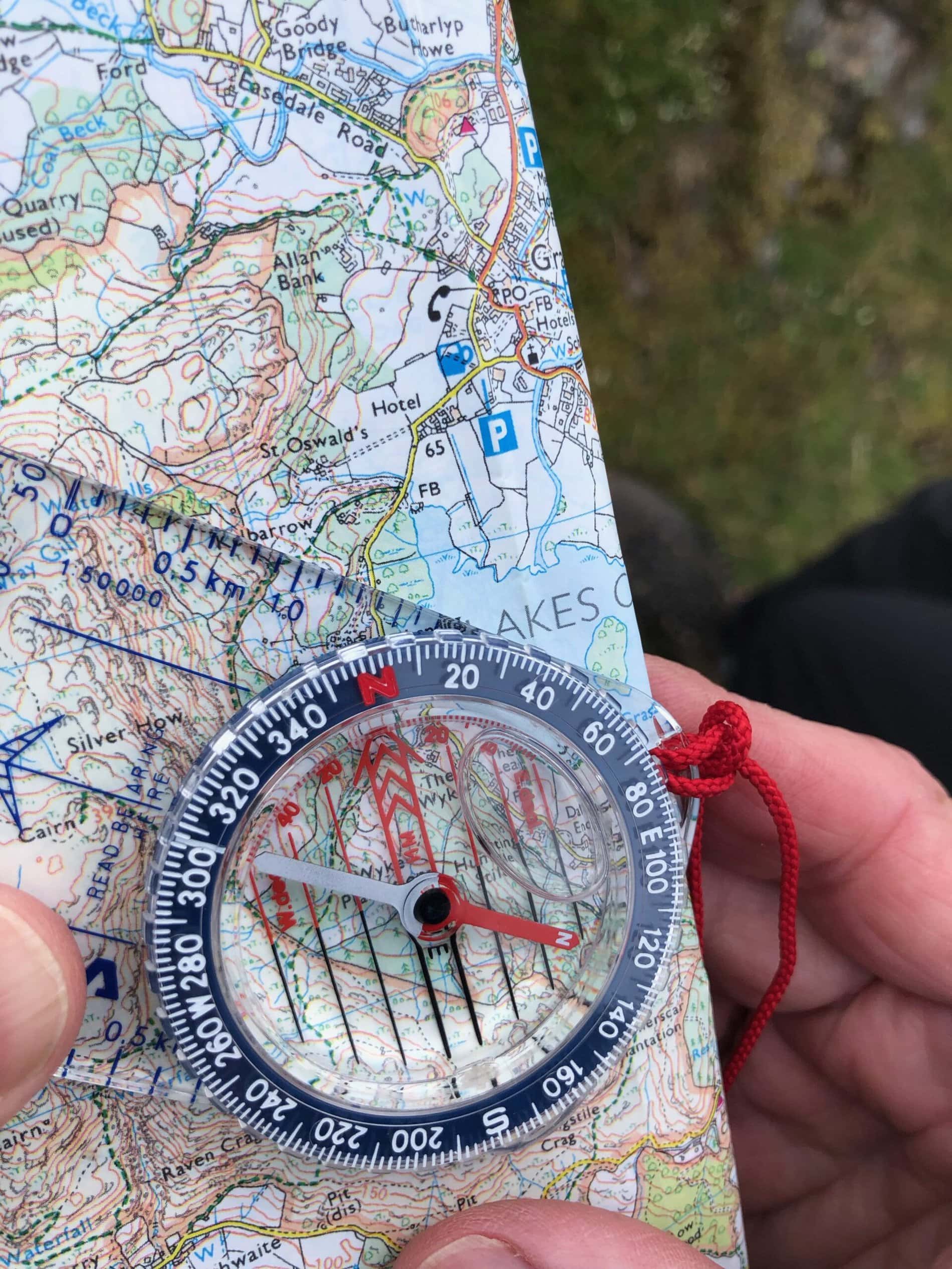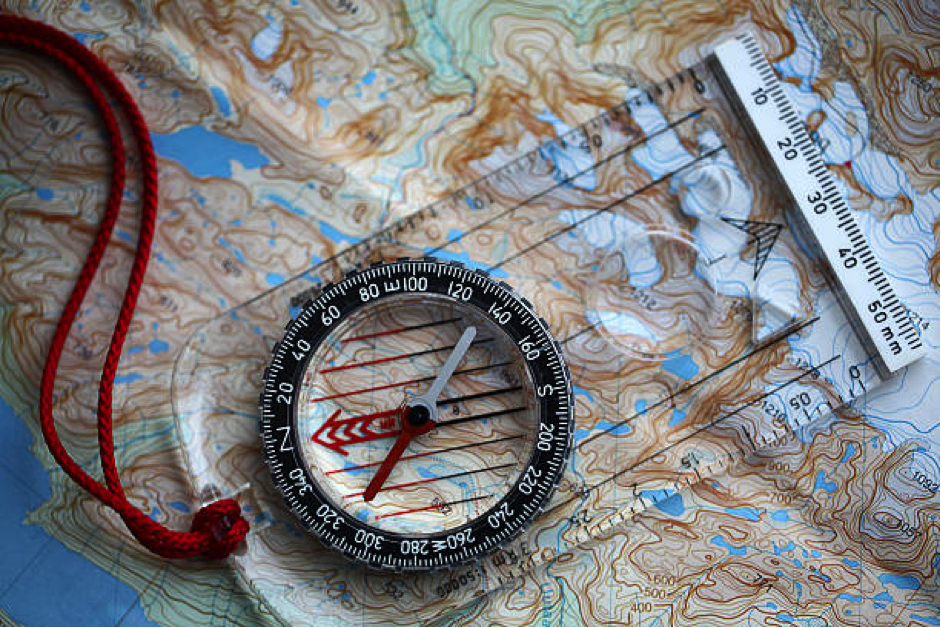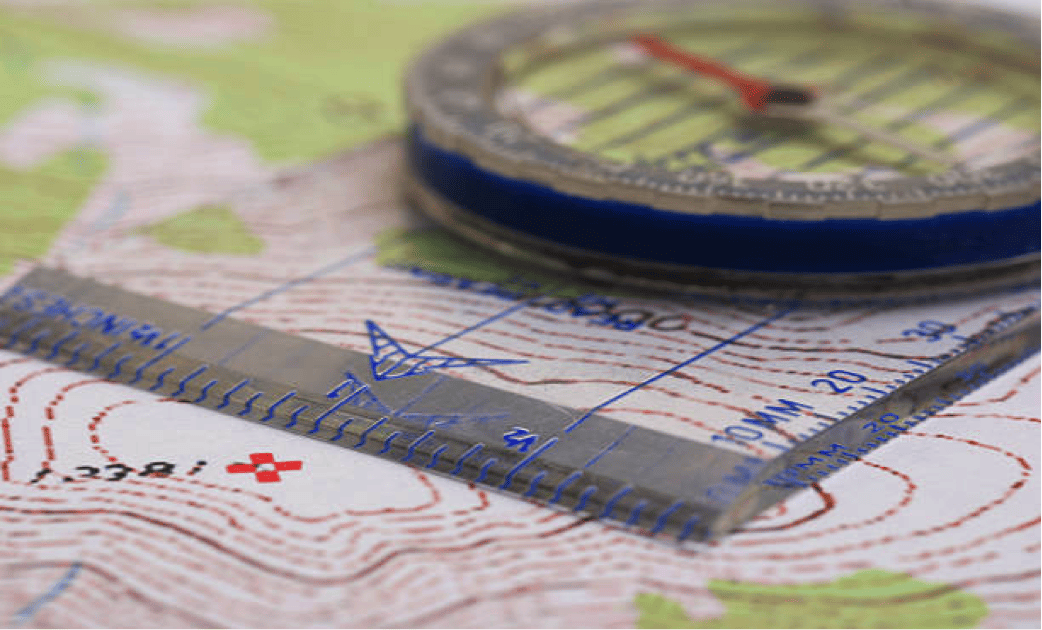How To Take A Bearing With Accuracy & Confidence | Essential Adventure Guide
Are you looking to learn how to take a bearing in a compass? If so, you’re in the right place. Taking a bearing with a traditional map and compass is an incredibly useful and practical skill that anyone can learn.
Whether you’re looking for directions when traveling or trying to get your bearings while on an adventure, learning to read and follow your compass will ensure you stay aware of the journey! In this guideline, we’ll review what taking a bearing entails and provide tips for getting accurate readings from your compass.
Bearing Usage Guide In A Compass For Beginners
If you’re new to using a compass, taking a bearing may seem daunting, but with our step-by-step guide, you can quickly and easily learn how to read your compass and navigate confidently.
What is a bearing, and how is it used in navigating with a compass? A bearing is a direction from one point to another, measured in degrees relative to either true or magnetic north. It is useful when navigating accurately over long distances, even with no visible landmarks. To navigate using a compass, you need to know how to take a bearing and how to read it on a map.
Here is our guide for mastering this skill:
❖ Familiarize Yourself With Your Compass
Start by getting to know how to use a compass. Understand its parts, how to adjust it depending on your location, and how to hold it steady to get an accurate reading. For a basic compass, the direction of the travel arrow and the sighting line are crucial features to take your bearing.
❖ Map Reading
To use a compass properly, you’ll also need to learn how to read a map. Start by determining where you are on the map and your travel direction. Also, choose the magnetic declination in your area. The declination can vary depending on your location and influences the compass readings.
❖ Taking A Bearing
Once you understand how to use a map and compass, it’s time to take your first bearing. Align your compass needle with the north-south grid lines on the map, hold your compass level, and turn the compass housing until the orienting arrow points to true north. Then, rotate the entire compass until the direction of the travel arrow points straight to your destination. Look at the compass reading to see what degrees you’re traveling to.
❖ Follow Your Bearing
Now that you’ve taken a bearing, turn the map so that the north-south grid lines are facing towards north. Readjust the compass housing relative to the direction of the travel arrow, and then hold the compass level as you follow your bearing. Keep your eyes on your compass as you move to avoid deviating from your route.
Bonus Tips For Novices: How To Use A Compass Like A Pro
Learning to take a bearing with a basic compass is essential for anyone who loves exploring the great outdoors. Nonetheless, even the most experienced outdoor enthusiasts can find using a compass for the first time daunting. If you’re new to using a compass, don’t worry – we’ve got you covered!
Here are some bonus tips to help you use a compass like a pro:
● Choosing The Right Compass
Your initial task is to select the appropriate compass. Several compasses are available, but a basic hand-held magnetic compass is the easiest for beginners. Look for a compass that is easy to read and has clear markings. It’s also important to ensure your compass works well before using it.
● Understanding Magnetic Deviation
Magnetic deviation is the difference between magnetic north and true north. It can affect the accuracy of your compass reading. It would help if you compensated for magnetic deviation to ensure the accuracy of your compass. You can add or subtract the magnetic deviation from your compass reading.
● Reading The Map And Compass
To take a bearing, you need to be able to read both the map and compass. Firstly, orient your map so that the top of the map matches the direction you are facing. Secondly, hold your compass level with the map and look at the compass rose. Finally, rotate the compass housing until the north arrow aligns with the direction of the north on the map.
● Taking And Following A Bearing
To take a bearing, align the compass housing with the landmark you want to travel towards and then read the bearing at the index line. From here, you can follow the bearing by traveling in the direction the compass points while checking and adjusting your course as you walk.
● Practicing In Different Environments
Finally, make sure to practice using your compass in different environments. It will help you become familiar with the equipment. It will also prepare you for potential outdoor situations where you must rely on your compass to navigate effectively.

The image above shows a bubble in the compass housing. This is caused by time due to knocks and bangs and general wear and tear of your compass. Because compasses are susceptible to damage, we would recommend a use of a case. Case here: Alternatively you can make a homemade version using a toilet roll and some gaffer tape! Simples. If the bubble like in the picture gets larger than 5mm then it’s time for a new one. You should get 15/20 years if not more if you properly look after your compass.
Which Compass:
For basic navigation then something like this is fine: Here This will get you going for sure. But as you progress then this one Here will definitely be the right choice. As it has all the functions you need, and all the ones you don’t! The Expedition 4 has long been the industry standard for outdoor professionals.
STEP 1 : Positioning The Compass: Aligning The Points
Properly positioning and aligning your compass is crucial for accurate navigation. Choose a flat surface and orient your map to correspond with the compass’s north-south axis. Place the compass on the map with its north-south axis parallel to the map edges, and align the needle with the orienting arrow.
Hold the compass level and read the bearing from the direction of the travel arrow. Avoid metallic objects and estimate midpoints if needed. With these steps, you’ll be ready to take your bearings like a pro!
Before using a compass to take a bearing, it is critical to ensure that the compass is appropriately oriented to the north. By aligning the compass with the grid north, users can ensure that their readings are accurate and not affected by the compass’s orientation. To orient the compass, lay it on a flat surface and move it until the compass needle lines up with the orienting arrow on the face of the compass. Continue to adjust the compass until the arrow points toward the north. Once the needle and arrow are aligned, the compass is correctly oriented.
The earth’s magnetic field can vary based on geographical location, impacting compass readings—It is known as magnetic variation, which is the difference between true north and magnetic north. To account for magnetic variation when using a compass, you can check a map to determine the magnetic variation at your location. Adjust your compass accordingly by rotating the bezel until the declination arrow points toward the magnetic variation value found on the map. Once the adjustment is made, following the compass readings will lead you in the right direction.
It is essential to align yourself with the compass correctly. To get an accurate bearing reading from your compass. Stand in place and hold the compass level, then turn your body until the compass needle points to the north.
Maintain your current position and turn the compass housing until the orienting arrow is aligned with the magnetic needle. Based on the compass readings, it aligns your body with the direction you want to follow. You are now ready to take your bearings and navigate towards your destination.
Conclusion
Taking a bearing with a traditional magnetic compass is an incredibly useful and practical skill anyone can easily learn. With the tips provided in this guide, you should now feel more confident reading your compass and be able to take a bearing accurately.
Remember that practice makes you perfect, and if, at first, you don’t succeed – keep trying! It might be beneficial to contemplate acquiring a compass of superior quality to assist with precision when obtaining bearings.
Taking bearings and using compasses is not difficult, but becoming proficient requires time and practice. So get out there, take some bearings, find your way around the world, and have an adventure! Maybe you’ll discover something new along the way!



